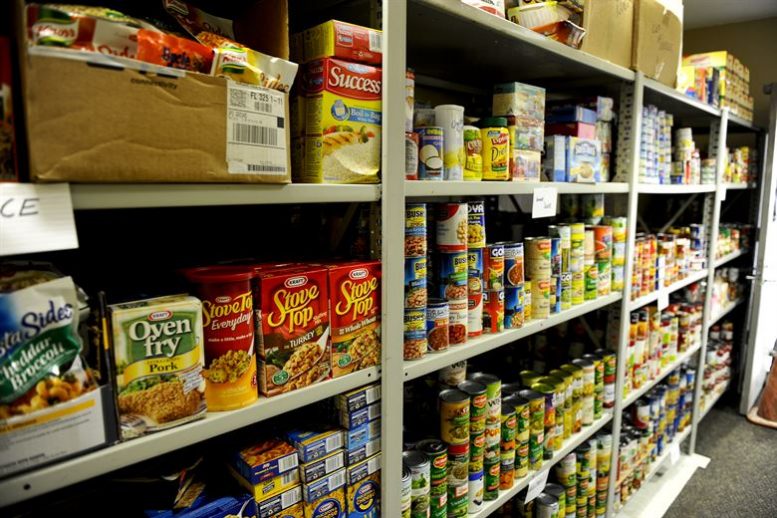BY SUSAN TEBBEN
With a new load of American Rescue Plan funding headed to the state in the new year, heads of advocacy groups and food assistance groups in the state are hoping the state will be more transparent as they choose spending priorities.
“We really know the legislative intent from Congress for these dollars was to make sure that state’s can support a strong and equitable recovery from the pandemic, and really make sure that we target these dollars to keep our state moving forward,” said Kelsey Bergfeld, director of Advocates for Ohio’s Future.
Bergfeld joined with representatives from the Ohio Association of Food Banks, the policy research firm Policy Matters Ohio and the Ohio Poverty Law Center on a press call Monday to push for more public input as the state decides what to do with funding dispersed to help with COVID-19 relief.
The state received $2.7 billion this year in federal funding for which the state has discretion in spending, and has about $600 million left. In 2022, the state will receive yet another $2.7 billion to be used however the state sees fit.
According to Policy Matters Ohio research director Zach Schiller, the state legislature quickly implemented legislation to disperse ARPA funding without significant public input, and so far have spent $250 million on water and sewer quality measures; $84 million on pediatric behavioral health, mental and health addiction; $250 million on law enforcement and first responders; and $1.47 billion paying off the state’s debt tangled in the unemployment insurance trust fund.
Schiller said the unemployment insurance “bailout” accounted for 71% of the spending of ARPA funds, compared to the 15% rate of other states across the country who paid off unemployment funds using ARPA monies.
“Only Texas has spent a greater amount, and only New Mexico and Kansas have spent a greater share of dollars on the UC bailout,” Schiller said.
Other states have also spent more on assistance in areas of food and housing, according to advocates. The National Conference of State Legislatures and the Center on Budget and Policy Priorities, Texas has spent $100 million on food assistance, Illinois has spent $103 million on housing assistance, Indiana and Kentucky moved $250 million and $50 million respectively to rural broadband improvements, Iowa invested $100 million in the housing shortage in the state and West Virginia spend $16.4 million on meal programs in senior centers.
“We need to make sure that the people who were hit hardest, who are being left behind, are in fact being targeted for assistance,” Schiller said.
Lisa Hamler-Fugit, the director of the Ohio Association of Food Banks, called the lack of public input on spending of the ARPA funds “a betrayal.” She said 22 states so far have devoted funds to human services programs, and with the rapidly rising cost of food and fuel driven by inflation and supply-chain issues, the number of Ohioans seeking assistance to meet basic needs is also growing.
“For 20 months, I have witnessed the direct impact of the pandemic on our most vulnerable citizens,” Hamler-Fugit said. “Our network serves now as a de facto grocery store for many families, seniors and communities.”
Now, the 12 Feeding America food banks and 3,700 member charities face an uphill climb finding more refrigerated trucks and drivers to take food to isolated areas and rural regions of the state, increasing the workforce to meet demand and fundraising to cover the gap.
“It pains me to find ourselves here now, talking to you about what seems like common sense, that our state should listen to the people harmed and continuing to be harmed and the organizations that are helping them,” Hamler-Fugit said. “We can’t possibly keep up with purchasing food at these unpredictable levels we are at right now, this is not sustainable for us on our own.”
As the process heads toward a new pot of money in the new year, advocates are asking that the legislature create more opportunities to hear what the state wants to prioritize for COVID-19 relief.
“Making decisions without a public process, I can’t say what the highest investment need is because we haven’t had that public process,” said Susan Jagers, director of Ohio Poverty Law Center.
***
Also from Ohio Capital Journal:
Gov. DeWine deploys National Guard to hospitals as COVID deaths surpass 2020
Gov. Mike DeWine is deploying more than 1,000 national guard troops to Ohio hospitals ahead of a busy holiday season that could swell the number of COVID-19 patients. The state is also in talks with a hospital staffing agency that could bring in additional workers from out of state.
“This will allow for Ohio hospitals to bring in qualified nurses and other medical personnel from out of state to fill needed positions and help ease some of the pressure on hospitals and their staff over the critical holiday period,” DeWine explained.
The governor’s move comes as the state faces a sobering reality: More people have died of COVID-19 this year than last despite widely available and effective vaccines. Many residents have stubbornly refused to get vaccinated, and the arrival of the highly contagious delta variant has underscored the consequences of their collective inaction. The nearly 14,000 Ohioans who have died this year were almost exclusively — about 95% — unvaccinated individuals.
Now, with the even more contagious omicron variant spreading, hospitals are bracing for yet another wave of the virus. According to Mike Abrams who heads up the Ohio Hospital Association, facilities around the state are teetering. READ MORE





